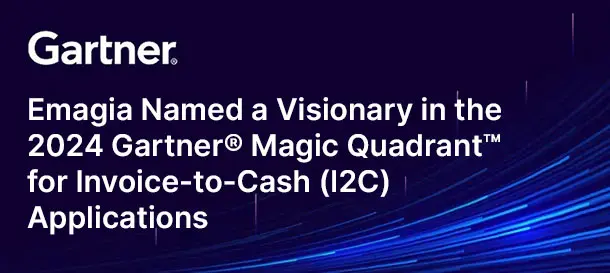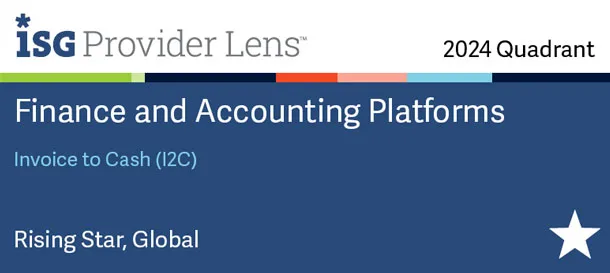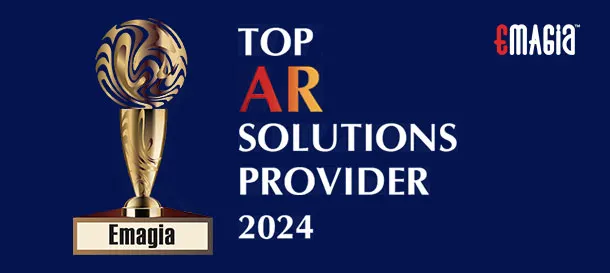In the relentless pursuit of business success, companies often focus heavily on revenue and profit. However, a truly financially healthy organization understands that cash flow is the lifeblood that sustains operations and fuels growth. One of the most powerful, yet frequently misunderstood, metrics for gauging and improving this vital aspect of financial health is the Cash Conversion Cycle (CCC).
If you’re asking yourself what is the cash conversion cycle, how to calculate cash conversion cycle, or wondering about the critical cash conversion cycle formula, this in-depth guide is for you. We’ll explore every facet of the CCC, providing you with the knowledge and actionable strategies to optimize your cash cycle and significantly enhance your business’s financial agility and competitiveness.
Understanding the Cash Conversion Cycle (CCC): More Than Just a Metric
The Cash Conversion Cycle (also known as the cash to cash cycle or cash to cash conversion cycle) is a financial metric that represents the number of days it takes for a business to convert its investments in inventory and accounts receivables into cash, factoring in the time it takes to pay its own suppliers. Essentially, it measures how long each net input dollar is tied up in the production and sales process before it is converted back into cash through sales.
A shorter cash conversion cycle indicates that your business is highly efficient at managing its working capital. It means you’re quickly turning your investments into readily available cash, which can then be reinvested, used to reduce debt, or returned to shareholders. Conversely, a longer cash conversion cycle suggests inefficiencies that might tie up valuable capital, potentially leading to liquidity shortages and increased reliance on external financing.
Why the Cash Conversion Cycle is a Critical Business Metric
The significance of a well-managed cash conversion cycle extends beyond mere financial reporting. It offers profound insights into a company’s operational efficiency and strategic financial health. Here’s why it’s so important:
- Optimized Liquidity: A shorter cash conversion cycle frees up cash faster, enhancing your company’s immediate ability to meet its obligations, seize opportunities, and reduce the need for costly short-term borrowing. This is crucial for maintaining a healthy days cash on hand calculation.
- Boosted Profitability: By minimizing the duration cash is tied up in operations, you can reduce interest expenses on borrowed capital and make more efficient use of your existing funds, directly contributing to higher net profits.
- Operational Efficiency Barometer: The CCC acts as a diagnostic tool, highlighting bottlenecks or inefficiencies in key operational areas like inventory management, sales collection processes, and supplier payment strategies.
- Informed Financial Planning and Forecasting: A clear understanding of your cash conversion cycle is fundamental for accurate cash flow forecasting. It enables better strategic planning for investments, expansions, and managing economic fluctuations.
The Cash Conversion Cycle Formula: A Deep Dive into Calculation
To truly grasp the cash conversion cycle, we must understand its core components and how to compute cash conversion cycle. The universal formula for cash conversion cycle is:
Cash Conversion Cycle = Days Inventory Outstanding (DIO) + Days Sales Outstanding (DSO) – Days Payable Outstanding (DPO)
Let’s break down each element of this essential cash cycle formula:
Days Inventory Outstanding (DIO): Measuring Inventory Efficiency for Your Cash Cycle
DIO quantifies the average number of days it takes for a company to sell its inventory. It reflects how efficiently your business manages its stock and converts raw materials into finished goods and then into sales. A lower DIO is generally better, indicating effective inventory turnover.
Calculating Days Inventory Outstanding:
$ \text{DIO} = \frac{\text{Average Inventory}}{\text{Cost of Goods Sold}} \times 365 \text{ days} $
Example: If a company has an average inventory of $200,000 and Cost of Goods Sold (COGS) of $1,000,000 annually, its DIO would be: $ (200,000 / 1,000,000) \times 365 = 73 \text{ days} $. This means, on average, inventory sits for 73 days before being sold.
Days Sales Outstanding (DSO): Accelerating Your Cash Conversion Rate from Receivables
DSO measures the average number of days it takes for a company to collect payments from its customers after making a sale on credit. A shorter DSO means you are collecting cash from sales more quickly, directly improving your cash conversion rate.
Calculating Days Sales Outstanding:
$ \text{DSO} = \frac{\text{Average Accounts Receivable}}{\text{Total Credit Sales}} \times 365 \text{ days} $
Example: If a company has average accounts receivable of $150,000 and annual credit sales of $1,800,000, its DSO would be: $ (150,000 / 1,800,000) \times 365 = 30.4 \text{ days} $. This means it takes about 30 days to collect on credit sales.
Days Payable Outstanding (DPO): Optimizing Supplier Payments for Your Cash Cycle
DPO indicates the average number of days a company takes to pay its own suppliers. A higher DPO generally means you are holding onto your cash for a longer period before paying your creditors, which can be beneficial for your liquidity. However, it’s crucial to maintain good supplier relationships and avoid late payment penalties.
Calculating Days Payable Outstanding:
$ \text{DPO} = \frac{\text{Average Accounts Payable}}{\text{Cost of Goods Sold}} \times 365 \text{ days} $
Example: If a company has average accounts payable of $100,000 and COGS of $1,000,000, its DPO would be: $ (100,000 / 1,000,000) \times 365 = 36.5 \text{ days} $. This implies payments to suppliers are made in approximately 36.5 days.
Putting It All Together: The Cash Conversion Cycle Equation
Using the example figures:
$ \text{CCC} = \text{DIO} + \text{DSO} – \text{DPO} $
$ \text{CCC} = 73 \text{ days} + 30.4 \text{ days} – 36.5 \text{ days} $
$ \text{CCC} = 66.9 \text{ days} $
This means that, on average, the company’s cash is tied up in its operations for almost 67 days before it’s converted back into cash.
Strategies to Improve Your Cash Conversion Cycle
A primary objective for most businesses is to shorten their cash conversion cycle. By doing so, you reduce the amount of working capital required, improve liquidity, and enhance profitability. Here are actionable strategies to optimize each component:
Optimizing Days Inventory Outstanding (DIO) for a Shorter Cash Cycle
- Implement Just-In-Time (JIT) Inventory Systems: Order and receive inventory only as it’s needed for production or sales, minimizing storage costs and capital tied up.
- Improve Demand Forecasting: Utilize advanced analytics and historical data to predict customer demand more accurately, reducing both overstocking and stockouts.
- Streamline Production Processes: Enhance manufacturing efficiency to reduce the time it takes to convert raw materials into finished goods ready for sale.
- Clear Out Slow-Moving Inventory: Identify and liquidate obsolete or slow-moving stock, even if it means offering discounts, to free up capital.
Accelerating Days Sales Outstanding (DSO) for Enhanced Cash Flow
- Offer Early Payment Incentives: Provide small discounts (e.g., “2/10 net 30”) to encourage customers to pay their invoices before the due date.
- Automate Accounts Receivable Processes: Implement robust accounting software for timely invoicing, automated payment reminders, and digital payment options. This is key for efficient invoice processing.
- Strengthen Credit Policies: Conduct thorough credit checks on new customers and enforce clear payment terms to minimize bad debts and delayed payments.
- Invoice Promptly and Accurately: Send invoices immediately upon delivery of goods or services and ensure they are error-free to avoid payment disputes.
Strategically Managing Days Payable Outstanding (DPO) for Optimal Cash Conversion
- Negotiate Extended Payment Terms: Work with suppliers to secure longer payment periods without jeopardizing relationships. This allows your business to hold onto cash longer.
- Centralize and Automate Accounts Payable: Implement systems that streamline invoice processing, approval workflows, and payment scheduling, ensuring you pay on time but not prematurely.
- Leverage Supplier Relationships: Build strong, transparent relationships with key suppliers that can lead to more flexible terms and early payment discounts where beneficial.
- Avoid Early Payments Without Benefit: Unless there’s a significant early payment discount offered (e.g., 2% for paying in 10 days vs. 30 days), don’t pay suppliers before the due date.
Interpreting Your Cash Conversion Cycle and Industry Benchmarks
While a shorter cash conversion cycle is generally desired, the ideal CCC varies significantly across industries. A retail business with high inventory turnover might aim for a very low or even negative CCC (like Amazon or Dell), while a capital-intensive manufacturing company will naturally have a longer cycle.
What is a good cash conversion cycle? There’s no one-size-fits-all answer. It’s crucial to compare your CCC to:
- Historical Performance: Is your CCC improving or deteriorating over time?
- Industry Averages: How does your CCC compare to competitors and industry benchmarks? This can help you identify areas for improvement or confirm best practices.
- Company-Specific Goals: Your strategic objectives might influence your target CCC.
A negative CCC, like that of Dell, indicates that the company receives cash from customers before it has to pay its suppliers. This is a highly efficient model, essentially using supplier financing to fund operations, turning growth into a cash generator.
The Impact of the Cash Conversion Cycle on Financial Planning and Growth
The cash conversion cycle directly influences a company’s financial planning strategies and its ability to fund growth. A prolonged CCC can necessitate higher working capital financing, increasing interest expenses and potentially limiting investment opportunities. Conversely, an optimized CCC provides more internal capital, reducing reliance on external debt or equity, which is particularly beneficial during periods of rapid growth.
Understanding this metric empowers financial managers to make more informed decisions regarding capital allocation, inventory levels, credit policies, and supplier negotiations. It transforms theoretical financial concepts into actionable strategies that directly impact the bottom line.
Emagia’s Role in Revolutionizing Your Cash Conversion Cycle Management
Managing the complexities of the Cash Conversion Cycle requires advanced tools and intelligent automation. Emagia, a leader in autonomous finance, empowers businesses to significantly shorten their CCC and unlock substantial cash flow improvements through innovative AI-powered solutions.
- AI-Powered Receivables Management: Emagia’s intelligent automation streamlines invoice-to-cash processes, predicting payment behavior, automating collections, and optimizing credit management. This drastically reduces your Days Sales Outstanding (DSO) by improving collection efficiency and accelerating cash realization.
- Intelligent Cash Forecasting: With predictive analytics and machine learning, Emagia provides highly accurate cash flow forecasting, helping you anticipate liquidity needs and optimize working capital. This empowers better decision-making to manage your overall cash cycle.
- Optimized Credit and Collections: By leveraging AI, Emagia helps businesses assess customer credit risk more effectively and automate personalized collection strategies, leading to quicker payments and reduced bad debt, thereby improving your cash conversion rate.
- Automated Deduction and Dispute Resolution: Emagia’s solutions automate the identification, categorization, and resolution of deductions and disputes, ensuring that cash is not unnecessarily tied up in unresolved issues, contributing to a smoother cash conversion cycle.
Emagia’s autonomous finance platform transforms traditional, manual processes into intelligent, self-driving operations, allowing businesses to gain unprecedented visibility and control over their cash flow, ultimately leading to a healthier and more agile cash conversion cycle.
Frequently Asked Questions about the Cash Conversion Cycle
What is the Cash Conversion Cycle?
The Cash Conversion Cycle (CCC) is a metric that measures the time, in days, it takes for a company to convert its investments in inventory and accounts receivables into cash, while also considering the time it takes to pay its own suppliers. It shows how long cash is tied up in the business’s operations before it’s collected back.
How do you calculate the Cash Conversion Cycle?
The cash conversion cycle formula is:
CCC = Days Inventory Outstanding (DIO) + Days Sales Outstanding (DSO) – Days Payable Outstanding (DPO).
Each component is calculated using specific financial data from your income statement and balance sheet.
What is a good Cash Conversion Cycle?
A “good” cash conversion cycle is generally a shorter one, or even negative, as it indicates efficient working capital management and strong liquidity. However, the ideal CCC varies significantly by industry. It’s best to compare your company’s CCC against its historical performance and industry benchmarks.
Why is the Cash Conversion Cycle important for a business?
The cash conversion cycle is crucial because it directly impacts a company’s liquidity, profitability, and overall financial health. A shorter cycle frees up cash, reduces the need for external financing, and indicates strong operational efficiency in managing inventory, sales collections, and supplier payments.
Can the Cash Conversion Cycle be negative? If so, what does that mean?
Yes, the cash conversion cycle can be negative. A negative CCC means that a company is collecting cash from its customers before it has to pay its own suppliers. This is an extremely efficient scenario, indicating that the business is effectively using supplier financing to fund its operations. Companies like Amazon and Dell are famous examples of businesses with negative CCCs.
What is the difference between Cash Conversion Cycle and Working Capital Cycle?
The terms Cash Conversion Cycle and Working Capital Cycle are often used interchangeably, but they are conceptually similar. The CCC specifically focuses on the time it takes to convert investments into cash, while the working capital cycle generally refers to the broader management of current assets and liabilities to support operations. The CCC is a more precise measure of efficiency within the working capital management framework.
How can I improve my Cash Conversion Cycle?
You can improve your cash conversion cycle by:
1. Reducing Days Inventory Outstanding (DIO) through better inventory management and demand forecasting.
2. Shortening Days Sales Outstanding (DSO) by accelerating customer collections and optimizing credit policies.
3. Strategically managing Days Payable Outstanding (DPO) by negotiating favorable payment terms with suppliers without harming relationships.
Is a higher or lower Cash Conversion Cycle better?
A lower Cash Conversion Cycle is generally better. It means your cash is tied up for a shorter period, leading to greater liquidity, reduced borrowing needs, and improved financial flexibility. A negative CCC is often considered the most desirable outcome.
What financial statements do I need to calculate the Cash Conversion Cycle?
To calculate the cash conversion cycle, you will primarily need data from your company’s Balance Sheet (for average inventory, average accounts receivable, and average accounts payable) and your Income Statement (for Cost of Goods Sold and Total Credit Sales).
Is there a cash conversion cycle calculator available?
Yes, many online financial calculators and spreadsheet templates function as a cash conversion cycle calculator. These tools allow you to input your DIO, DSO, and DPO figures to quickly compute your CCC. They can be very helpful for quick analysis and scenario planning.
Ready to Optimize Your Cash Conversion Cycle?
Don’t let inefficient cash flow hold your business back. Discover how intelligent automation can transform your financial operations and put your cash to work for you.




